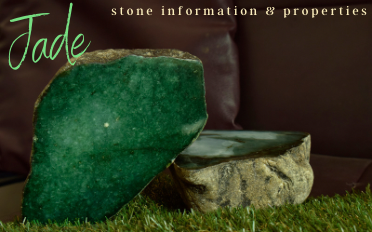Jade | Stone Information, Healing Properties, Uses All Entries

Jade, a precious gemstone revered for its beauty and symbolism, has a rich history spanning thousands of years. Its formation, historical significance, and cultural importance have made it a coveted stone across various civilizations.
Jade forms through the metamorphic process, wherein intense heat and pressure transform existing minerals over millions of years. This process results in the formation of two different types of jade: nephrite and jadeite. Nephrite is the more common variety, found in regions like China, Russia, and New Zealand. Jadeite, considered the more precious and rare type, is primarily sourced from Myanmar (formerly Burma).
Throughout history, jade has held immense significance for numerous cultures. In ancient China, it was regarded as the "imperial gem" and symbolized power, status, and immortality. Emperors adorned themselves with jade ornaments to demonstrate their authority, and it was believed that jade could protect the wearer from harm and bring good fortune. Jade artifacts, such as the iconic jade burial suits, were buried with high-ranking individuals to ensure a prosperous afterlife.
Jade also played a crucial role in Mesoamerican civilizations, particularly the Maya and Aztecs. These cultures associated jade with fertility, life, and the divine. Jade objects, including intricate carvings and jewelry, were highly valued and used in religious ceremonies and rituals. The Mayans believed that jade possessed spiritual qualities and could connect the living with the spirit world.
Beyond China and Mesoamerica, jade held significance in other cultures as well. In ancient Egypt, it symbolized love and the afterlife, and it was often used in burial rituals. In New Zealand, the indigenous Maori people considered jade (known as pounamu or greenstone) as a sacred stone representing strength, prosperity, and connection to the land.
Even today, jade continues to be highly valued in many cultures. It remains an important material in Chinese art and jewelry, with skilled craftsmen creating intricate jade carvings and sculptures. In modern times, jade has also gained popularity in the global market, with collectors and enthusiasts appreciating its natural beauty and cultural heritage.
The historical and cultural significance of jade is a testament to its enduring allure. Its formation through geological processes, its role as a symbol of power and spirituality in various civilizations, and its continued importance in art and culture make jade a gemstone that continues to captivate and fascinate people around the world.